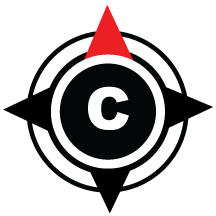Ownership is more than responsibility. It's a personal investment in the outcome. It's when leaders take it personally, without making it personal.
It shows up in the subtle difference between "That's my job" and "That's my problem to solve." Between "That's what I was told to do" and "Here's what I'm driving forward."
Ownership is the leadership multiplier. It's what turns talent into traction. Strategy into results. Culture into movement.
It's not just about leaders. Teams take ownership when leadership models it relentlessly. Not just in what they say, but how they show up every day.
I worked with a company where the COO kept saying, "People need to be more accountable." But the deeper we looked, the clearer the problem became. Leadership was managing activity, not outcomes. Everyone was busy, but no one was clear on what "done" looked like. Leaders didn't own that confusion, and it multiplied down the line. People stayed in their swim lanes. Silos formed. Execution stalled.
The shift began when the leadership team stopped pointing fingers at others and started taking ownership of the gaps they had created. They redefined roles based on outcomes. Clarified decisions. Owned the mess they had made and committed to fixing it. That's when the culture shifted. Accountability didn't need to be demanded. It started to spread.
Here's what ownership looks like in action:
-
Own the Outcome, Not Just the Task. Task-driven leaders say, "I did my part." Outcome-driven leaders ask, "Did we get the result?" They zoom out. They track dependencies. They make sure the job is done right, not just done.
-
Clean Up the Mess. Leaders who take ownership don't hide behind excuses. When things break, they step up. They ask what they could have done differently. Not because everything is their fault, but because they know taking ownership sets the tone.
-
Finish What You Start. Ownership shows up in the finish. Leaders who follow through, even when priorities shift, build trust. Half-finished work is often worse than none at all. Taking ownership means seeing it through or resetting expectations clearly.
-
Transfer Ownership, Don't Delegate Tasks. Delegation without ownership creates bottlenecks. Great leaders transfer context, not just to-do lists. They say, "Here's what winning looks like. You drive it. I'm here to support." That creates authentic engagement, not just compliance.
Want to raise the bar on taking ownership within your team? Start by raising it on yourself.
-
Audit your own follow-through. Where have you dropped balls or left loops open? Go clean them up quietly and quickly.
-
Clarify what success looks like for your role this week. Not just what you're doing but what you're delivering.
-
Watch your language. Stop saying, "I'll try." Say, "I've got it" and mean it.
And if you want to build a culture of ownership?
-
Share results, not just activity. Ask people to lead with outcomes.
-
Model the mindset shift from blame to fix. People mirror what you do under pressure.
-
Celebrate completions. Don't just reward effort. Recognize who closes loops.
The hard truth is that no one follows a leader who passes the buck. Ownership is how trust is built when leaders take responsibility even for the gray areas.
It's what turns a company from reactive to reliable. From chaos to clarity. From hustle to scalable execution.
Once ownership is established, everything else moves more quickly.
Pat Alacqua helps leadership teams get the right work done by the right people at the right time. Using practical tools, he prevents or fixes the operational and mental breakdowns that stall growth, allowing leaders to scale with clarity and control. He is the author of the Amazon best-seller Obstacles to Opportunity: Transforming Business Challenges into Triumphs. Learn more at PatAlacqua.com.

